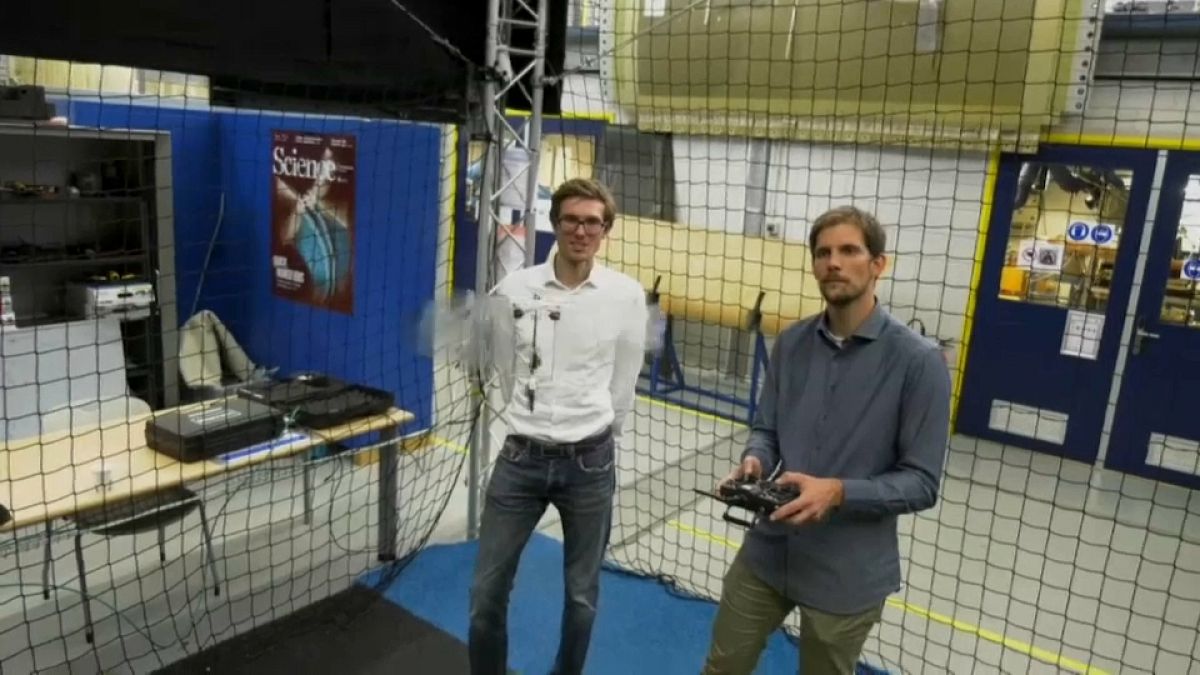Dutch researchers have built a wing-flapping drone which mimics insect flight – and could teach zoologists more about how real insects' brains work.
Researchers in the Netherlands have developed a small, winged drone that mimics how insects fly.
They hope the flying robot could one day help them to better understand how insects pull off fast, agile manoeuvres.
Their invention, named DelFly Nimble, could pave the way for radically different drones.
Weighing just 29 grams and with a 33 centimetre wingspan, its developers say the robot can fly for about five minutes.
With its four flapping wings, beating 17 times per-second, the drone is capable of carrying an additional payload of up to four grams – which could mean a camera system or additional sensors.
DelFly's designer Matej Karasek, a researcher at Delft University of Technology, says his creation has two pairs of wings, each operating independently.
"There are two tiny motors and each of them operates one wing pair," he says.
"So, I can flap the right-wing pair and left-wing pair independently and flapping these wings together, this is what provides the lift force so that the robot can fly."
DelFly's flapping wing motion is intended to mimic the complex patterns of flying insects. It can perform manoeuvres including 360-degree flips, loops and barrel rolls.
By analysing how the drone flies, researchers believe they'll be able to better understand how insects fly.
"One thing we cannot do with real insects is to look into their brains while they're flying," says Karasek.
"So, we can observe what they're doing, how they move their wings, but we don't really know why they are doing that. And this is something we can do with our robots."
Biologists at the Netherlands' Wageningen University collaborated in the development of DelFly Nimble.
Professor Florian Muijres' team of experimental zoology researchers are studying flying insects' complex wing motion patterns and aerodynamics.
They also hope to learn more about their sensory and neuro-motor systems.
"We pretty well understand that actually the manoeuvre dynamics that these animals make when they avoid, for example, danger, but we don't know what's going on in the head of the animal, in the neural control system. And using this robot, we can actually test that," says Muijres.
Researchers hope their work could also lead to the development of lightweight, power-efficient flying robots, perhaps even scalable to insect size.
Micro Air Vehicle Laboratory scientific lead, professor Guido de Croon has been developing insect-inspired drones for over ten years.
He believes they have the potential for novel applications.
"It's so lightweight and safe that it would be really good to have this flying in an environment even around people or above people," says De Croon.
"So, for example, we think of applications like in greenhouses, where it can look at the plants and see if it needs more water or, for example, some minerals or something, but it can also fly in warehouses to keep track of the stock."
